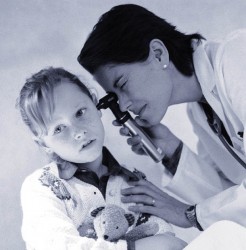The Rise of Convenient Care Clinics and their Medical Malpractice Risks

by Michael Matray, editor of Medical Liability Monitor
Consumer demand for convenience, access and affordability is changing how episodic-care and preventative medicine is delivered in the United States. A novelty 15 years ago, today there are more than 3,000 convenient care clinics in the United States, most located within the nation’s largest big-box retail outlets.
With a pre-existing doctor shortage exacerbated by an influx of thousands of newly insured individuals post-Affordable Care Act, convenient care clinics let consumers see a healthcare professional the same day they experience a sinus infection, sore throat or other minor ailment. No longer does the patient have to wait a week or more for a doctor’s appointment when he or she can walk down to the local Walmart, Walgreens or Target and be treated within 20 minutes. It also provides an alternative to the often cost-prohibitive emergency room for minor issues that need immediate attention.
Also popular with consumers is that retail clinics offer them a way to minimize the out-of-pocket costs of primary care. In a post-Affordable Care Act landscape where healthcare insurance deductibles are growing higher and higher to discourage overuse of the system, transparency in pricing is appealing. Because how much a strep throat test or a flu vaccine costs is clearly advertised (most post a list of services with prices), consumers can comparison shop for the most affordable care, like they would any other products and services. While convenient care clinics take insurance, they offer those still without coverage greater control over their healthcare spending.
Americans love both the convenience and the care they receive at convenient care clinics. A Wall Street Journal poll found that consumers report 93-percent satisfaction with the convenience, and 90 percent are satisfied by the quality of care. And big-box are realizing great potential in the model.
Earlier this year, CVS Health Corp. and Target Corp. recently entered into an agreement for CVS Health to acquire Target’s pharmacy and healthcare clinic businesses for approximately $1.9 billion. CVS Health acquired Target’s more than 1,660 pharmacies across 47 states and will operate them through a store-within-a-store format, branded as CVS/pharmacy, and a CVS/pharmacy will be included in all new Target stores that offer pharmacy services.
The almost $2 billion deal between CVS and Target underscores the expanding role retailers intend to play in the modern healthcare system. According to The Value Proposition of Retail Clinics, a 2015 study prepared by healthcare consultant Manatt Health and the Robert Wood Johnson Foundation, since 2006 the number of retail clinic sites have increased almost 900 percent, and in 2012 they recorded some 10.5 million patient visits.
Part of the cost-saving potential in retail healthcare is attributable to its profit model, which relies on non-physician advanced practice clinicians—predominantly nurse practitioners and physician assistants—who receive lower salaries than physicians and lower third-party reimbursement to provide more affordable care than might be delivered in an emergency department or urgent care clinic.
Traditional office-based healthcare providers—primary care physicians and pediatricians in particular—have been vocal about the downsides of this alternative healthcare service, expressing concern about the quality and continuity of care, particularly the treatment of patients with serious or chronic conditions. These physician groups urge close physician oversight of non-physician providers in the retail clinic setting.
What are the medical malpractice exposures of a retail clinic, and what kind of medical malpractice insurance costs are involved in managing a convenient care clinic?
Retail convenient care clinic executives point to a lack of adverse events and malpractice claims. While the number of medical malpractice claims against retail healthcare clinics is too small to indicate any trends, potential claims include the absence of proper policies and procedures, lack of written practice guidelines, inadequate physician supervision, failure of advanced practice clinicians to properly refer to or collaborate with a physician and taking on excess clinical responsibility. Advocates argue that as long as a convenient care clinic’s staff practices protocol-based medicine—where predefined protocols are used as a tool or guideline for diagnosis—and an emphasis is placed on regular internal and external reviews of those protocols, the risk profile of a convenient care clinic carries no significant difference from a traditional medical practice.
Again, while there is not enough data on convenient care clinic malpractice claims to extrapolate any conclusions, advanced practice clinicians—in general—have experienced an uptick in liability claims. This uptick is likely due to the to the increased number of advanced practice clinicians and physician assistants by the healthcare delivery system as a whole.
When a malpractice claim is made against a convenient care clinic, the cause is similar to any traditional healthcare practice that employs advanced practice clinicians—failure to meet the standards of supervision with advanced practice clinicians or vicarious liability resulting from substandard care delivered by advanced practice clinicians.
If an advanced practice clinician shares his or her liability indemnification with the supervising physician, that physician can expect his or her malpractice premium to be $150 to several-hundred-dollars more expensive; if the advanced practice clinician opts to have his or her own medical malpractice insurance policy, it will likely cost him or her $1,500 to $2,500 annually.


We live in a small town and while I don’t normally go to the CVS Minute Clinic, I was so sick over the weekend that they were my only option. The lady refused to test me for the strep/flu because she assured me it was just allergies, despite my laundry list of symptoms and looking like a zombie. She said my “breath didn’t smell sick” therefore a test wasn’t needed. She also wrote several things in my chart that were not true. I went to a reputable doctor the following Monday (after exposing children at my school) and found out I had the flu and a viral infection. How can I stop these places from operation? How can I bring attention to their lack of care and lies?